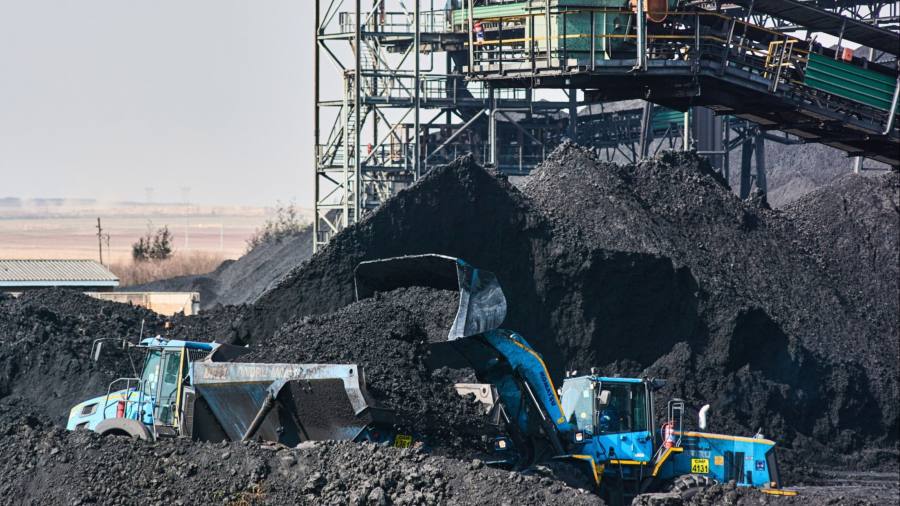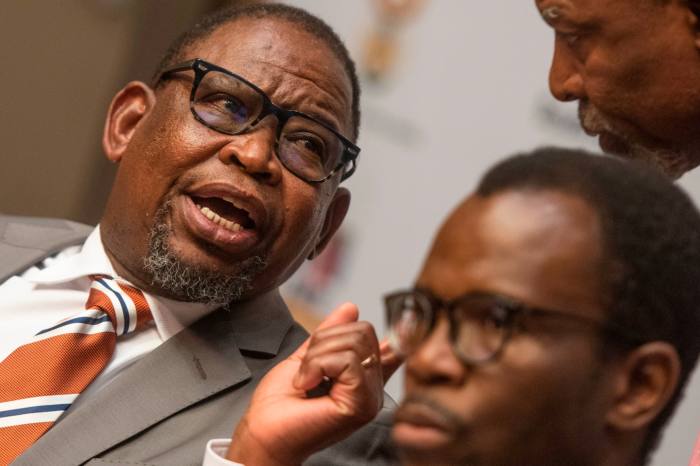
The South African government has criticised the structure of an $8.5bn finance package provided by developed countries to help it shift from coal to clean energy, saying it relies too heavily on loans that will add to the country’s debt burden.
The $8.5bn initiative was originally unveiled at the UN COP26 climate summit in November 2021, with details of the grant and loan mix announced on Friday.
Just 4 per cent, or $330mn, of the international funding plan — known as South Africa’s Just Energy Transition Partnership — is in grants, officials said. The remainder is a mix of sovereign and multilateral loans and credit guarantees.
“The energy transition can really only be fully and properly executed if there is more grant funding and if there is more funding made available in the form of concessional [low-interest] loans,” said South African president Cyril Ramaphosa, unveiling the details.
“The key challenge for South Africa and our sister countries on the continent is access to new, at scale and predictable funding that does not further exacerbate our debt crises.”
Enoch Godongwana, South Africa’s finance minister, said other countries in receipt of international climate finance were likely to raise similar objections. “Is it attractive, this thing? Is it real? Other countries will have to look at the implications,” he said in an interview. “It may well be that, if this [grant] composition is not changed, other countries, such as Indonesia, Vietnam and India may then say it’s not worth it.”

The $8.5bn package has been provided by France, Germany, the European Investment Bank, the UK and the US.
South Africa has incorporated the funding into a five-year $83bn plan, recently presented to its cabinet, to finance a shift from coal towards solar and wind energy, as well as to build green hydrogen and electric vehicle production.
The nation is among the world’s most coal-dependent countries, with 85 per cent of its electricity derived from the fossil fuel. At least 100,000 jobs depend directly on coal in a country with an official unemployment rate of 34 per cent. Its ageing and badly maintained coal-fired power stations are struggling to meet peak energy demand of 38GW, leading to rolling blackouts in recent years.
The governing African National Congress has stressed the need for a “just transition” that preserves communities that depend on mining.
The lenders behind the international funding say it will be a catalyst for investment from elsewhere. Spain has already said it would provide an additional $2.1bn in financial instruments to support Spanish companies investing in renewable energy in South Africa. Norway and Denmark are also considering investments.
One official with close knowledge of the financing package said South African leaders were engaging in “theatre” and it was always apparent that only a small portion of the funding would be in the form of grants.
“We hold our heads high. It was always intended to be catalytic funding,” he said.
Mafalda Duarte, head of Climate Investment Funds, a multilateral investor, said the $500mn CIF had pledged to the scheme under its Accelerating Coal Transition initiative was highly concessional and included a grant of 10 per cent.
The rest of the CIF funds, intended to help retire 5GW of coal-fired power, equated to a grant portion approaching 50 per cent and involved low interest rates, she said. CIF estimates its investment alone will stimulate a total $2.6bn in funding.
“I’m optimistic about the model,” Duarte said. “I’m not saying it’s going to be easy. But both on the South African side and on our side, there are institutional arrangements in place to figure this out.”
South Africa’s five-year plan had a $39bn funding gap, officials said on Friday, adding that they were in talks with other countries and organisations about potential financing deals.
Although South Africa is a middle-income country, with per capita gross domestic product of about $7,000, its sovereign rating has deteriorated and its borrowing costs increased as its debt has risen as a proportion of GDP.
Of the $8.5bn, the EIB, France, Germany and the US are each providing about $1bn. The UK is providing $1.8bn in support, with $1.3bn as a guarantee to the African Development Bank, which will expand the bank’s lending capacity and enable it to channel funds to South Africa.
The rest of the UK money will be delivered through British International Investment, its development finance institution, which is supporting the retrofitting of a coal-fired power plant with turbines that can run off gas and eventually hydrogen.